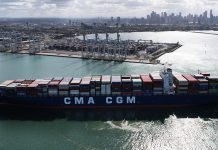
Strikes at ports on the US East Coast and Gulf Coast, which would have caused an economic and supply chain crisis, have been called off – with ocean container freight rate growth now expected to slow or fall.
The strikes were set to begin on 15 January and would have forced the closure of ports from Maine to Texas. This has now been averted after a tentative agreement over a new six-year master contract was reached between the International Longshoremen’s Association (ILA), which represents port workers, and the US Maritime Alliance (USMX).
Data from Xeneta – the ocean and air freight intelligence platform – shows average spot rates from the Far East to the US East Coast had already increased 26% since 14 December and were expected to rise further had the strikes gone ahead.
What Have Strike Actions and Threats Revealed for United States
Emily Stausbøll, Xeneta Senior Shipping Analyst, stated: “The agreement between the ILA and USMX must be welcomed because a strike had the potential to be a supply chain and economic disaster, but it still highlights the difficulties facing shippers in managing supply chain risk.
“We have seen average spot rates on the trade from the Far East to US East Coast spike 26% since mid-December to stand at US$6,800 per FEU (40ft container), with carriers poised to add further disruption surcharges up to US$3,000 per FEU should the strike have gone ahead.
“It is extremely difficult for shippers to protect supply chains and manage freight spend with this level of uncertainty and when the stakes are so high.”
Stausbøll added that spot rates may now begin to fall – but shippers still face other supply chain threats in 2025.
She said: “Looking ahead, it is likely spot rate growth will now soften on trades into the US from the Far East, suggesting a brighter outlook for shippers negotiating new long term contracts.
“Signs of a weakening underlying global market in 2025 are also seen in falling average spot rates from the Far East to North Europe in January, which had spiked 51% between 31 October and 1 December last year.
“Shippers must remain cautious, however, because it will not take much for freight rates to begin spiralling once again, particularly given the ongoing conflict in the Red Sea and the return of Trump to the White House, which could escalate the US-China trade war.”
This article was written by Emily Stausbøll, Xeneta’s Senior Shipping Analyst





